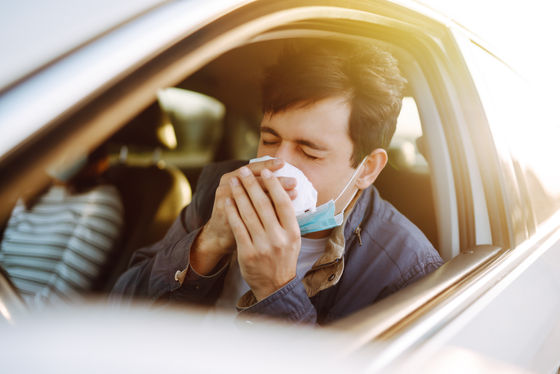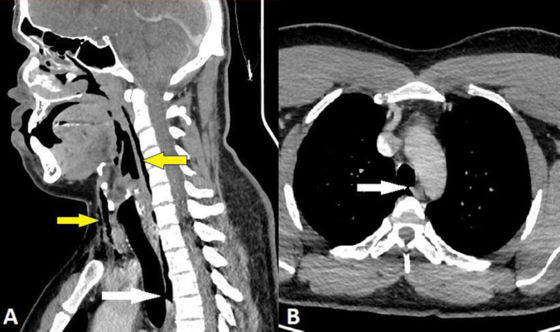The world's first case of a man's trachea rupturing after holding back a sneeze is reported.

Sneezing has the important function of expelling foreign substances that have entered the nose, but there are times when it is difficult to sneeze even if you want to, such as during a solemn funeral or an important meeting. Doctors at the University of Dundee Medical School in Scotland reported a case in which a man suffering from hay fever suffered from a severe sore throat after holding back a sneeze, and an examination revealed that he had a hole in his trachea. Doctors are urging people not to hold in their sneezes.
Spontaneous tracheal perforation following a sneeze | BMJ Case Reports
In world's 1st known case, man tears windpipe from holding sneeze | Live Science
https://www.livescience.com/health/in-worlds-1st-known-case-man-tears-windpipe-from-holding-sneeze
In this case, which was introduced in BMJ Case Reports, the world's largest medical case repository, a man in his 30s suffering from allergic rhinitis had a small sneeze about 2mm in his airway after holding back a sneeze while driving. That means there is a hole. To hold back a sneeze while driving, the man pinched his nose and closed his mouth, which put strong pressure on his airways.

When a doctor examined a man who came to the hospital with severe neck pain, palpation confirmed swelling on both sides of his neck and decreased range of motion, and he also heard a crackling noise called ``crepitus''.
However, an endoscope found no abnormalities, so doctors performed an X-ray and CT scan and discovered that there was a small hole measuring 2 mm x 2 mm x 5 mm in the trachea. It was also confirmed that air leaking from the trachea was trapped in the tissues of the throat.
Below is a photo of the actual CT scan, where the white arrow indicates a ``tracheal laceration'' in the man's throat, and the yellow arrow indicates ``surgical emphysema'' where air is trapped.

Generally, when you sneeze, the pressure exerted on your upper respiratory tract is 1 to 2 kPa, but if your mouth and nose are blocked, the pressure can reach up to 20 times more. Rasads Misirovs of the University of Dundee Medical School, who reported the case, concluded that the cause of the lacerations found during the examination was ``sudden pressure on the trachea when trying to hold back a sneeze.''
Surgery is recommended if respiratory failure or emphysema progresses due to tracheal lacerations, but fortunately the man's injuries were only minor, so he was treated with painkillers and medication for allergic rhinitis and his condition was monitored. I did. The men were also instructed not to engage in strenuous exercise for at least two weeks.
Five weeks later, the man underwent another CT scan and the tear was gone.
In the past, it has been reported that sneezing with the nose and mouth closed caused pharynx perforation, but as far as we know, tracheal perforation due to sneezing has never been reported. ”, write Misirovs et al.
A man whose throat burst while holding back a sneeze is reported - GIGAZINE

by quinn norton
Misirovs and colleagues say the lesson learned from this case is that everyone should be advised not to hold in a sneeze, as sneezing with the mouth closed and nose pinched can lead to tracheal perforation. You should.”
Related Posts:
in Science, Posted by log1l_ks







